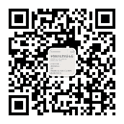| 基金项目: |
|
| 摘要点击次数: 1855 |
| 全文下载次数: 530 |
| 中文摘要: |
| 目的 探讨视频反馈法在临床技能教学中的地位及其应用后的效果。方法 采取实验对照方法。以华中科技大学同济医学院附属第一临床学院2014级临床八年制及2016级临床五年制即将进入《临床基本技能》课程的185名学生作为试验组,以2013级临床八年制及2015级临床五年制的166名学生作为对照组。试验组学生采用视频反馈法,对照组学生采用传统教学法。教学结束后,比较两组学生的理论考试和技能考试的成绩差异,了解试验组学生对视频反馈教学方法的适应情况。采用GraphPad Prism 5进行t检验。结果 在五年制学生中,试验组学生理论考核成绩为(87.64±0.94)分,技能考核成绩为(84.78±0.54)分;对照组学生理论考核成绩为(85.14±0.80)分,技能考核成绩为(83.10±0.53)分,试验组和对照组的理论及技能考核成绩差异均有统计学意义(P<0.05)分。在八年制学生中,试验组学生理论考核成绩为(86.46±0.66)分,技能考核成绩为(86.38±0.73)分;对照组学生理论考核成绩为(84.90±1.21)分,技能考核成绩为(83.79±0.64)分。试验组和对照组的技能考核成绩差异有统计学意义(P<0.05),理论考核的成绩差异无统计学意义。对试验组学生基于视频反馈教学法的问卷调查结果显示:93.3%(168/180)的学生表示如果没有视频拍摄环节,不会在课后主动练习;87.8%(158/180)的学生认为提高了自主学习的能力;82.8%(149/180)的学生认为临床技能方面收获很大,提高了学习效率;71.1%(128/180)的学生觉得经过课后视频拍摄后,在临床上面临相应操作时自信心有提升。结论 视频反馈教学法有效地提高了学生在临床基本技能课堂上的效率,有利于学生对临床基本技能的掌握,提高了学生学习的积极性。 |
| 英文摘要: |
| Objective To explore the role of video-assisted feedback in clinical skill teaching in undergraduate classes and its application effect. Methods The experimental control method was adopted in the study. A total of 185 students from Eight-year program of clinical medicine of Batch 2014 and Five-year program of clinical medicine of Batch 2016 in Tongji Medical College of Huazhong University of Science and Technology were collected as the experimental group, and another 166 students from Eight-year program of clinical medicine of Batch 2013 and Five-year program of clinical medicine of Batch 2015 as the control group. The experimental group adopted the teaching mode of video-assisted feedback and the control group received the traditional teaching mode. By the end of training sessions, the differences between the two groups in both the skill assessments and the theories were compared. A satisfaction survey about the video-assisted feedback was made in the experimental group. GraphPad Prism 5 was used for t test. Results In the students from Five-year program of clinical medicine, the scores of theoretical assessment in the experimental group were (87.64±0.94) points and the scores of skill assessments were (84.78±0.54) points; the scores of theoretical assessment in the control group were (85.14±0.80) points and the scores of skill assessments were (83.10±0.53) points. In the students from Five-year program of clinical medicine, the difference of both the theoretical and the skill assessment scores between the experimental group and the control group was statistically significant (P<0.05). In the students from Eight-year program of clinical medicine, the scores of theoretical assessment in the experimental group were (86.46±0.66) points and the scores of skill assessments were (86.38±0.73) points; the scores of theoretical assessment in the control group were (84.90±1.21) points and the scores of skill assessments were (83.79±0.64) points. The difference of the skill assessment scores between the experimental group and the control group was statistically significant (P<0.05), and no significant difference was found in the theoretical assessment. The questionnaire survey in the experimental group based on video-assisted feedback teaching method showed that 93.3% (168/180) of students said that they would not take the initiative to practice after class if there was no video shooting session; 87.8% (158/180) of the students thought the video-assisted feedback teaching method improved their ability of independent learning; 82.8% (149/180) of students thought this method significantly increased their learning efficiency and confidence in clinic; 71.1% (128/180) of the students felt that after-class video shooting, their self-confidence was improved when they faced the corresponding operation clinically. Conclusion The application of video-assisted feedback has significantly improved the outcome of clinical skill training for students, as compared to the traditional teaching mode. |
|
查看全文 查看/发表评论 下载PDF阅读器 |
|
| 关闭 |
|
|
|
